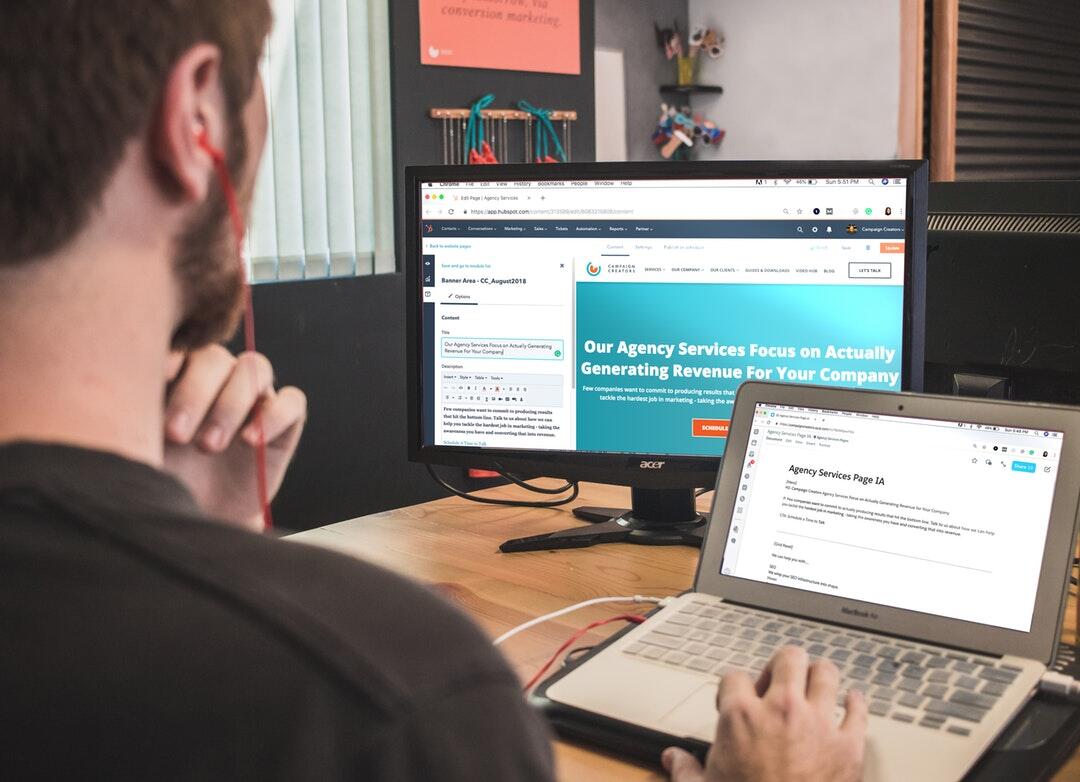
In a world where content is king, making sure your message gets heard can be challenging. That’s where SEO comes into play. Search Engine Optimization (SEO) is essential for creating effective content that reaches a broad audience.
But what exactly does SEO involve? And how can it help you maximize your reach?
This blog will guide you through SEO’s vital role in crafting effective content, offering practical tips and examples to help you get started.
On-Page SEO Strategies
On-page SEO involves optimizing web pages to boost rankings and attract relevant traffic. Key elements include using the right keywords, optimizing title tags, meta descriptions, headers, and ensuring high-quality, informative content.
Using Keywords Effectively
Once you’ve identified your keywords, the next step is to use them effectively. Place your primary keyword in the title, the first paragraph, and naturally throughout the content. Avoid “keyword stuffing,” which can hurt your rankings.
Crafting Compelling Titles and Meta Descriptions
The title and meta description are the first things people see on the SERP. Make sure your title is catchy and includes your primary keyword. The meta description should provide a brief overview of your content and entice readers to click through.
Optimizing Headers
Headers (H1, H2, etc.) make your content easier to read and help search engines understand your content’s structure. Use your primary and secondary keywords in your headers to improve your SEO.
Off-Page SEO Techniques
Off-page SEO involves actions outside your website that influence rankings, like backlink building, guest posting, and social media marketing. Diversify your backlinks and stick to ethical practices.
Building Quality Backlinks
Not all backlinks are created equal. Focus on getting backlinks from reputable sites in your industry. Guest blogging, influencer outreach, and creating shareable content are effective ways to build quality backlinks.
Social Media Engagement
Social media can also boost your off-page SEO. Sharing your content on social media platforms increases its visibility and can lead to more backlinks. Engage with your audience on social media to build relationships and encourage sharing.
Online Directories and Listings
Submitting your website to online directories and listings can also improve your off-page SEO. Make sure your business information is consistent across all platforms to avoid confusion.
Technical SEO Essentials
Technical SEO focuses on improving the technical aspects of your website to increase its ranking. This includes optimizing your website’s speed, ensuring it’s mobile-friendly, and making it easy for search engines to crawl.
Website Speed
A slow website can hurt your rankings and drive visitors away. Use tools like Google PageSpeed Insights to check your website’s speed and find areas for improvement.
Mobile Optimization
With more people using mobile devices to browse the internet, ensuring your website is mobile-friendly is crucial. Google uses mobile-first indexing, meaning it primarily uses the mobile version of your site for ranking.
Crawlability
Search engines use bots to crawl your website and index your content. Make sure your website is easy to crawl by creating a sitemap and using robots.txt files to guide the bots.
Creating High-Quality Content
Content is the heart of SEO. High-quality content attracts visitors, encourages engagement, and earns backlinks. Professional creators like KNY Web focus on creating content that is informative, engaging, and valuable to your audience.
Understanding Your Audience
To create content that resonates with your audience, you need to understand their needs and preferences. Conduct surveys, analyze your website’s analytics, and engage with your audience on social media to gain insights.
Content Structure
A well-structured article is easier to read and more likely to rank well. Use short paragraphs, bullet points, and subheadings to break up the text and make it more digestible.
Visual Content
Visual content like images, videos, and infographics can make your content more engaging. Visuals can also improve your SEO, as they encourage visitors to spend more time on your page.
Monitoring and Analyzing Your SEO Efforts
SEO requires ongoing monitoring and analysis to assess effectiveness. Google Analytics and Search Console offer insights into website performance.
Tracking Keywords
Keep track of how your keywords are performing and make adjustments as needed. If certain keywords are not driving traffic, consider updating your content or targeting different keywords.
Analyzing Traffic Sources
Understanding where your traffic comes from can help you refine your SEO strategy. Look at your organic search traffic, social media traffic, and referral traffic to see which channels are most effective.
Measuring Engagement
Engagement metrics like bounce rate, time on page, and click-through rate can provide insights into your content’s effectiveness. Use these metrics to make data-driven decisions and improve your content.
Staying Updated with SEO Trends
SEO is constantly evolving. Stay updated with the latest trends and algorithm changes to keep your content competitive. Follow SEO blogs, attend webinars, and participate in online forums to stay informed.
Algorithm Updates
Search engines like Google regularly update their algorithms. These updates can affect your rankings, so it’s important to stay informed and adapt your strategy accordingly.
New SEO Tools
New SEO tools are constantly being developed. Stay updated with the latest tools to make your SEO efforts more efficient and effective.
Industry News
The SEO landscape changes rapidly. Stay informed about industry news and trends to stay ahead of the competition.
The Role of SEO in Building a Brand
SEO plays a crucial role in building a brand. High search engine rankings increase your visibility and credibility, helping you establish your brand as an authority in your industry.
Building Trust
High search engine rankings can enhance your brand’s credibility. When people see your website at the top of the SERPs, they are more likely to trust your brand.
Increasing Visibility
SEO increases your online visibility, making it easier for potential customers to find you. This increased visibility can drive more traffic to your website and increase your brand awareness.
Enhancing User Experience
SEO is not just about search engines; it’s also about improving the user experience. A well-optimized website is easy to navigate, loads quickly, and provides valuable online content, enhancing the overall user experience.
Maximizing Your Reach with SEO in Creating Effective Content
SEO is a powerful tool for maximizing your reach and creating effective content. By understanding and implementing SEO strategies, you can improve your search engine rankings, drive more traffic to your website, and build a strong online presence. Start your SEO journey today and see the difference it can make for your brand.
Remember, SEO is a marathon, not a sprint. Stay patient, stay consistent, and keep learning. Happy optimizing!
For more captivating and diverse reads, be sure to explore the other articles on our blog.




